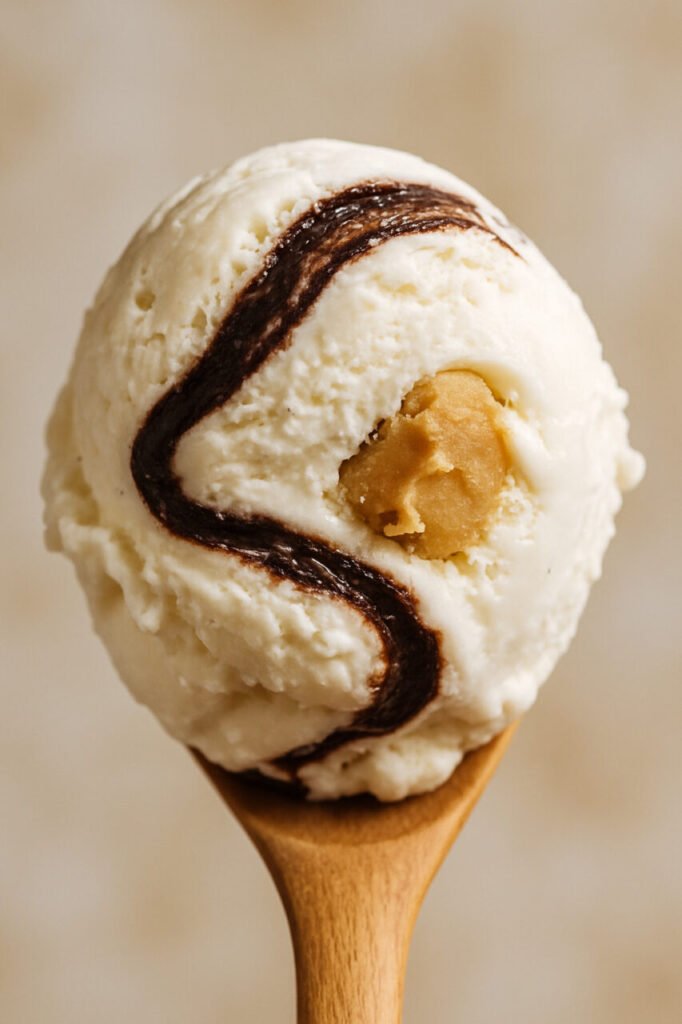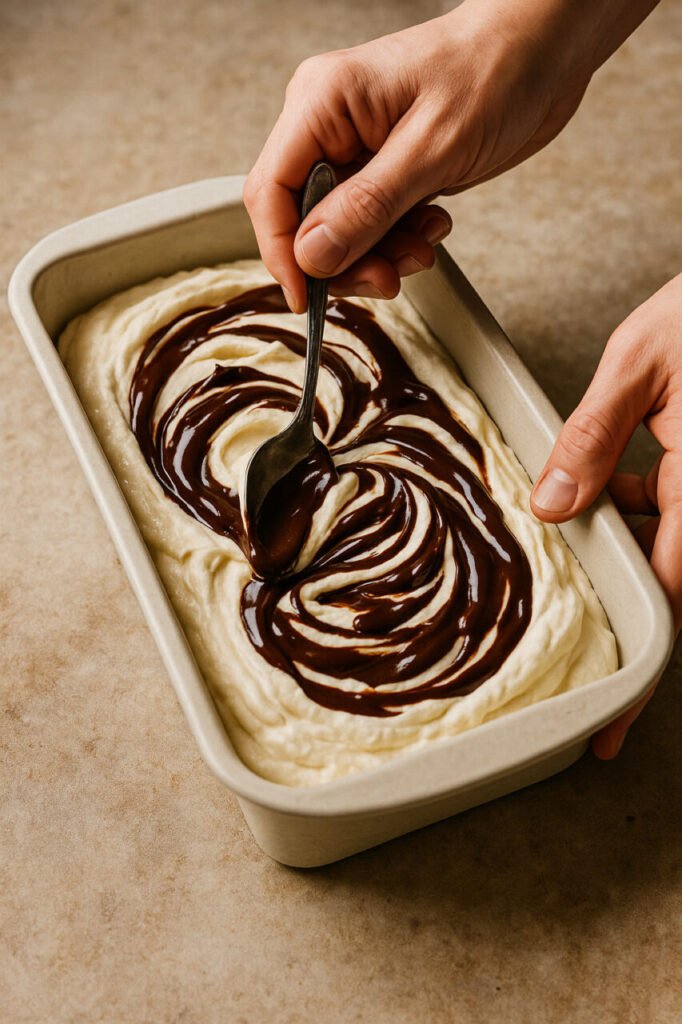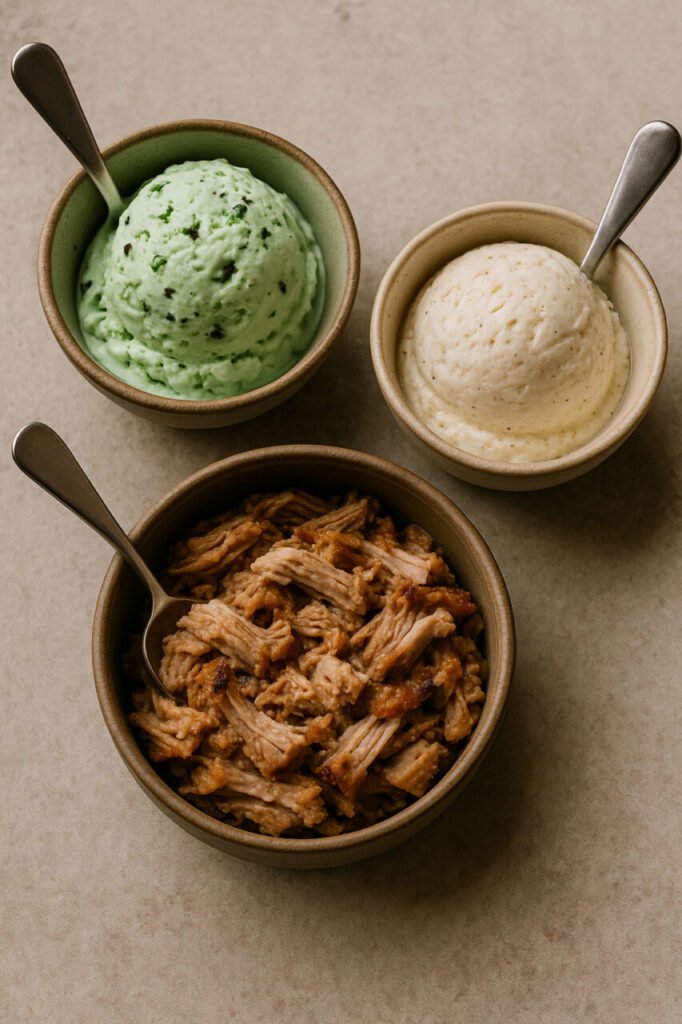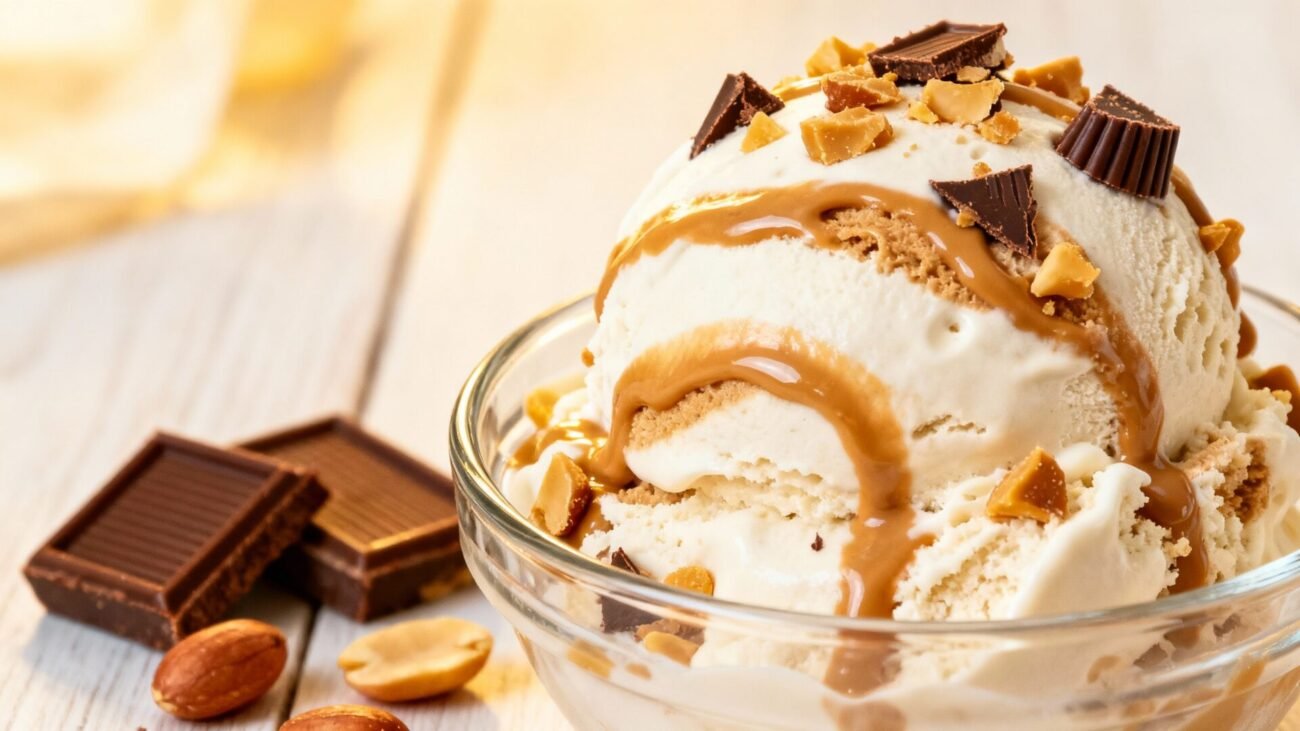Alright, let’s get straight to it. I’ve been developing keto dessert recipes professionally for six years, and I can tell you that most homemade keto ice creams are… disappointing. They’re icy, crumbly, or have that weird sugar alcohol aftertaste that lingers. It’s frustrating. After testing literally hundreds of combinations, I’ve landed on a formula for Peanut Butter Cup Keto Ice Cream that actually delivers—creamy, scoopable, and with those perfect chocolate ribbons that don’t turn into brittle shards when frozen. This isn’t just another recipe; it’s the one I make for myself when I need a real treat.
Why This Keto Ice Cream is a Game-Changer
The Quest for Creamy Low-Carb Ice Cream
The fundamental problem with keto ice cream is the absence of sugar. Sugar doesn’t just add sweetness; it lowers the freezing point, creating a softer, smoother texture. Without it, you get a frozen brick. Through exhaustive testing, I’ve found that the solution isn’t one magic ingredient, but a combination. Allulose is the absolute cornerstone here—it behaves most like sugar in terms of freezing point depression. But it’s not the whole story. The fat content and the emulsification process are just as critical. This recipe balances both in a way that finally works.
Deconstructing the Perfect Peanut Butter Cup Flavor
It’s not just about adding peanut butter to a base. The peanut butter flavor needs to be robust enough to stand up to the freezing process, which can mute flavors. I use a two-pronged approach: peanut butter powder mixed into the base for a distributed flavor, and then small, frozen chunks of straight peanut butter folded in at the end. This gives you both a consistent peanut butter backdrop and those intense little bursts, mirroring the experience of a real peanut butter cup. The chocolate ribbon, made with a specific ratio of cocoa butter to coconut oil, stays fudgy and pliable, even straight from the freezer.

Gathering Your Keto Ice Cream Ingredients & Tools
The Ice Cream Base: What You Need
This is where precision matters. These aren’t suggestions; they’re the results of my testing.
Ingredients for the Base:
- 2 cups heavy cream
- 1 cup unsweetened almond milk (or macadamia nut milk for richer flavor)
- 3/4 cup Allulose (This is non-negotiable for texture. Bocha Sweet or monk fruit blends will still be icy.)
- 1/4 cup Confectioners-style Swerve or monk fruit (this balances the slight cooling effect of allulose)
- 5 large egg yolks
- 1/4 cup powdered peanut butter (like PBfit)
- 1 tsp vanilla extract
- 1/2 tsp xanthan gum (crucial for preventing ice crystals)
- 1/4 tsp salt
Ingredients for the Mix-Ins:
- 1/4 cup natural, sugar-free peanut butter, frozen into small chips
- 1 recipe Sugar-Free Chocolate Ribbon (see below)
Swirls & Ribbons: The Chocolate Magic
This isn’t just melted chocolate. If you use straight melted sugar-free chocolate, it will freeze solid. The secret is a “magic shell” style sauce that we swirl in.
Ingredients for the Chocolate Ribbon:
- 1/3 cup sugar-free dark chocolate chips (Lily’s is my go-to)
- 2 tbsp refined coconut oil (so you don’t taste coconut)
- 1 tbsp cocoa butter wafers
- Pinch of salt
Essential Equipment for Homemade Keto Ice Cream
You don’t need a $500 machine, but you do need a few key things.
- Ice Cream Maker: I use the Cuisinart 1.5 Quart model. It’s workhorse reliable. Your bowl must be fully frozen—like, 24 hours in the back of the freezer frozen.
- Heavy-Bottomed Saucepan: For tempering the custard without scorching it.
- Fine-Mesh Strainer: This is my pro tip for an ultra-smooth custard. It catches any accidental bits of cooked egg.
- Immersion Blender: Absolutely essential for properly dispersing the xanthan gum without creating clumps. A regular blender works too, but an immersion blender is easier for cleanup.
Crafting Your Peanut Butter Cup Keto Ice Cream
Step 1: Building the Ultra-Creamy Base
This is a custard base (French-style ice cream), and it’s worth the extra step. Don’t skip the tempering.
- In your saucepan, whisk together the heavy cream, almond milk, peanut butter powder, allulose, Swerve, and salt. Heat over medium until just simmering, then remove from heat.
- In a separate bowl, whisk the egg yolks until pale. Now, the critical part: tempering. Slowly drizzle about 1 cup of the hot cream mixture into the egg yolks while whisking constantly. If you dump the eggs straight into the hot pan, you’ll get scrambled egg ice cream. Not good.
- Pour the tempered yolk mixture back into the saucepan with the remaining cream. Return to medium-low heat and cook, stirring constantly with a spatula, until it thickens enough to coat the back of the spoon (around 170-175°F). Do not let it boil.
- Immediately strain the custard through your fine-mesh strainer into a clean bowl. This is your insurance policy. Whisk in the vanilla.
Step 2: Mastering the Sugar-Free Chocolate Ribbon
While the base is cooling, make the ribbon.
- Combine the chocolate chips, coconut oil, and cocoa butter in a microwave-safe bowl.
- Heat in 20-second bursts, stirring well between each, until completely smooth. Stir in the salt. Set it aside at room temperature. It should be fluid but not hot when you swirl it in later.
Step 3: The Churning & Swirling Process
Patience is key here. Rushing this ruins the texture.
- Let your custard base cool to room temperature, then cover and refrigerate for at least 4 hours, preferably overnight. It needs to be completely cold.
- Right before churning, use your immersion blender to blend the xanthan gum into the base for 30-45 seconds. This incorporates air and ensures the gum is fully dissolved, which is what fights ice crystals.
- Churn the base in your pre-frozen ice cream maker according to its instructions. It should look like thick soft-serve. This usually takes 15-20 minutes.
- In the last minute of churning, add the frozen peanut butter chips so they’re just distributed.
- Now, layer it. Spread one-third of the churned ice cream into a loaf pan. Drizzle with one-third of the chocolate sauce. Repeat layers twice more. Do not mix it! You want ribbons, not a homogenous chocolate mess.
Step 4: Freezing for the Perfect Scoopable Texture
This is the final, critical step.
- Press a piece of parchment paper directly onto the surface of the ice cream. This prevents ice crystals from forming on top.
- Freeze for at least 4-6 hours to firm up.
- Pro Tip: Let the container sit on the counter for 10-15 minutes before trying to scoop. This is the beauty of the allulose—it actually softens properly.

Pro Tips for Keto Ice Cream Success
Troubleshooting Common Texture Issues
- Icy & Hard: You likely used a different sweetener. Allulose is key. Also, did you skip the xanthan gum or the immersion blending step?
- Grainy: The custard might have gotten too hot and curdled slightly, or the xanthan gum wasn’t blended properly. Always strain your base.
- Too Soft After Churning: This is normal! It needs the firming-up time in the freezer. The allulose keeps it from becoming a rock, but it still needs to set.
Customizing Your Flavor Variations
The base recipe is a blank canvas.
- Mint Chip: Omit peanut butter, add 1 tsp peppermint extract and sugar-free chocolate chips.
- Cookie Dough: Add chunks of my almond flour keto cookie dough.
- Vanilla Bean: Scrape a real vanilla bean into the base for an incredible depth of flavor.

Frequently Asked Questions
Can I make this keto ice cream without an ice cream maker?
You can, but the texture won’t be as smooth. The churning incorporates air and breaks up ice crystals. Without one, you’d need to take the ice cream out of the freezer and blend it vigorously every 30-45 minutes for the first few hours, which is tedious and not nearly as effective.
What are the best sugar-free sweeteners for keto ice cream?
This is my professional opinion: Allulose is the undisputed champion for texture. Monk fruit and stevia are great for sweetness but do nothing for softness. Erythritol (the main ingredient in Swerve) can cause a cooling sensation and can sometimes recrystallize, making things gritty. That’s why I use a blend—allulose for the body and texture, and a touch of confectioners monk fruit/erythritol blend for pure sweetness without the cooling effect.
How do I prevent ice crystals from forming?
Three things: 1) Xanthan gum. It’s a stabilizer that binds water. 2) Proper fat content from the heavy cream and egg yolks. 3) The parchment paper pressed directly on the surface. Do these three things, and ice crystals are a non-issue.
Is this peanut butter cup ice cream dairy-free?
No, this specific recipe relies on heavy cream for its fat content and texture. You could experiment with full-fat coconut cream, but the flavor and texture profile will be different, and you’ll likely need to adjust the sweetener as coconut cream can be sweeter. It’s a whole different recipe development challenge.
How long can I store homemade keto ice cream?
In an airtight container with the parchment paper method, it keeps its perfect texture for about 2 weeks in the freezer. After that, it might start to develop a little freezer burn or suffer some texture degradation, but honestly, mine never lasts that long.
